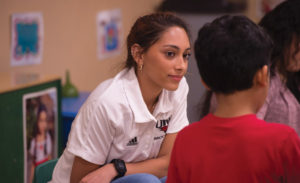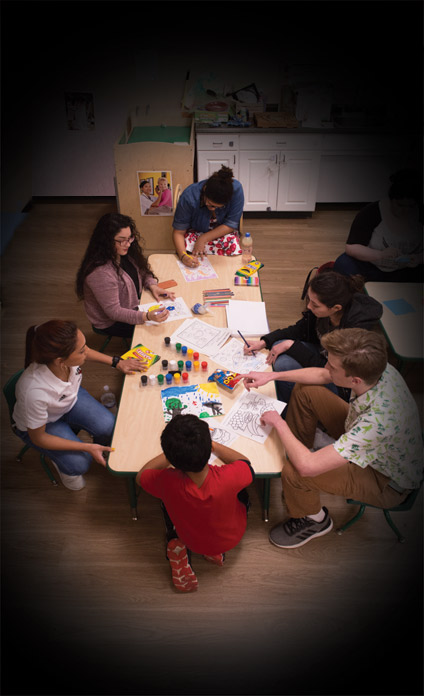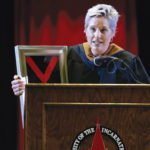Story by Edmund Tijerina, Photos by Robin Jerstad
It wasn’t long ago that many special education students were shuttled off to separate classrooms for much of the day. But in today’s classrooms, inclusivity is key. Now, students with special needs are being increasingly included in general education classes – and teachers are tasked with teaching children with a wide range of abilities.
“With the push for inclusion, every classroom teacher is going to have a student who learns differently,” said Dr. Elda Martinez, a professor in UIW’s Dreeben School of Education and the director of Teacher Education. “It’s not a choice of whether or not you will teach a special learner, but when.”

A future teacher and elementary school student learn from each other.
Martinez and Dr. Stephanie Grote-Garcia, associate professor of education and a reading specialist, are leading the efforts at UIW to prepare future teachers to work in classrooms that include students who have a range of challenges and abilities. Theirs is a challenge that previous generations of teachers perhaps didn’t often face.
“Our focus is to keep the children in the general education setting as much as is appropriate for that child’s learning,” Martinez said. “In order to do that well, we have to make sure we’re collaborating and training and preparing teachers.” Preparing teachers to help all kinds of learners, they explain, is a way of living the University’s Mission.
“The field of special education is a move toward and an act of equal rights,” Grote-Garcia said. “For example, every child has a right to be in a general education classroom.”
In practice, that means teachers create Individualized Education Plans, or IEPs, for special education students so those children can have the attention, accommodations or access to tools that enable them to be as successful as their potential allows.

Dr. Elda Martinez, third from left, and her education class at an education symposium.
“You hear the term, ‘learning disabilities.’ We talk about ‘learning differences’ instead and how that frames your understanding of that concept,” Martinez said. “They process information differently, but they still process it. The term ‘learning disabled’ speaks to an inability to learn, and we don’t believe that in practice.”
For these professors, focusing on abilities instead of disabilities sets the tone for the entire approach to educating future teachers. Connecting with special education students is more than a matter of good teaching. It also requires keen insight and an ability to find solutions and different approaches to ensure lessons stick and that students come away with the knowledge they need – something that’s perhaps much easier said than accomplished. Nonetheless, they are essential skills these education professors are determined to ensure tomorrow’s teachers possess.

Student teachers work with children in the community as part of their education training.
“Even if they don’t have disabilities, every single student learns differently,” said Jennifer Lingsch, a third-year student in UIW’s education program. “It’s about accommodating and making modifications so that each learner can succeed, whatever their differences are in learning.”
Beyond learning educational strategies, UIW students undertake field work providing invaluable real-world experience and access to progressive and international approaches. Grote-Garcia takes students to Respite Care, an organization that helps families care for children with developmental disabilities and provides an emergency shelter for children with special needs.
There, the education students can work with the residents and get to know them over multiple visits. Martinez also leads a group to attend a symposium on learning differences. Among the activities are some designed to give people an idea of how specific disabilities present. And this year, Grote-Garcia took a group of education students to Finland to see how educators in one of the best school systems in the world meets the needs of all students.
“We talk about being global citizens and being aware of other countries and other needs,” Grote-Garcia said. “When you have that exposure, it influences you in your own classroom and your teaching practices.”
Today’s education students are learning not only about how disabilities or differences affect learning, but also about the moral urgency of reaching all students. The result is a new class of educator, armed with leading strategies for connecting with every student and better prepared to support pupils than perhaps ever before.
“There are younger teachers who are coming into the profession who have been trained differently,” said Martinez. “We may have a more informed teaching force coming through in the coming decade.”










